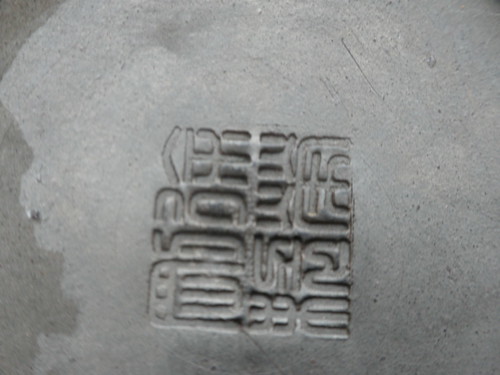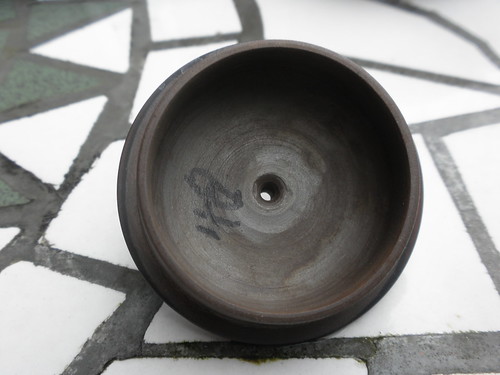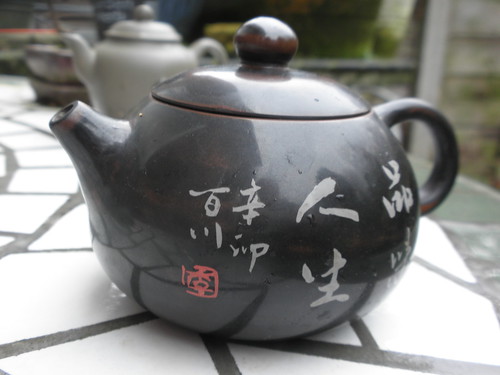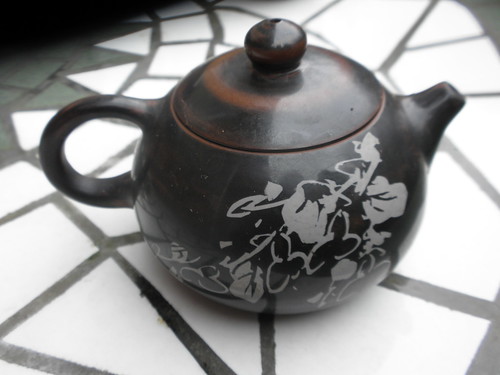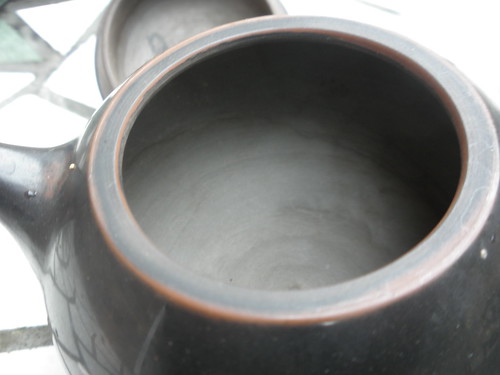Both the Dragon Egg and the Small Xi Shi are 'purple and red clay' whereas the Large Xi Shi is 'red clay'. As far as I can tell. there does not seem to be a difference as far as effect on tea

Compared to porcelain, Jian Shui clay does seem to add a little depth of flavor to the tea brewed in it...the tea seems to have more body. The difference, though, is not earth shattering..but distinct

The pots all had a wonderful 'wet stone' sort of smell when I first got them. Now they all have a tea smell to them. When I brew tea in them, I always do the lid test: smelling the lid to capture the tea's perfume.
The exterior of these pots is indeed polished-not glazed. The interiors don't appear to be polished much at all...slightly rougher (but still very smooth) with circular marks. The 'purple and red' pot interiors seems to have a little opalescence to them..similar to that of a mussel shell.
The shape and size really does seem to have an effect on the teas. The smaller, flatter shaped pots seem to keep aromas in very well..especially with lightly fired and/or oxidized teas. Conversely, some of the darker roasted/oxidized teas seem 'deeper' fuller bodied in rounder slightly larger vessels.
My choice of a high and round bodied Large Xi Shi pot for Dan Cong and Song Zhong teas might seem odd but let me explain. When testing these teas in all three pots, I noticed that the smaller and flatter Xi Shi softened astringent 'straw like' notes....which was nice...but honestly, I like those notes....I do not want them softened up. Hence the perhaps, slightly unconventional choice for brewing these teas

I will be getting a Yixing pot soon...and will post the results of my comparative testing (amateurish as it is).
In the mean time, I would love to hear from other Jian Shui users....or answer any questions about these pots (bear in mind that I am no expert on this type of clay

